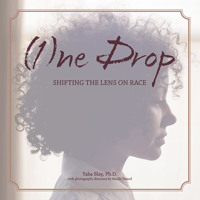Interracial couples now part of mainstream
The Chicago Tribune
2013-10-23
Dawn Turner Trice, Reporter
Mixed-race relationships becoming more common in Chicago — and everywhere else
Stephen Blessman and Patricia Jones Blessman met in the mid-1990s and fell in love. It didn’t matter to either of them that he’s white and she’s African-American.
They have a lot in common. They are both Roman Catholic and deeply involved in the church. They came of age in the 1960s and are socially conscious.
“But we didn’t get married to prove a point,” said Blessman, 57, who lives with his wife of 14 years and their 5-year-old son in Chicago’s South Loop. “I fell in love with her because she’s funny, beautiful, smart and principled and we’re of the same generation and have the same values.”
As an interracial couple in America, the Blessmans are a relatively rare pairing — but such couples are not nearly as rare as they used to be. A study by the Pew Research Center found that in 2010 about 15 percent of all new marriages in the U.S. were between spouses of a different race or ethnicity — more than double the 6.7 percent in 1980.
The surge has brought the percentage of all current U.S. marriages that are interracial to 8.4 percent. In Chicago, about 7.4 percent of marriages in 2011 involved mixed-race couples, according to data compiled by the Center for Governmental Studies at Northern Illinois University…
…Even in politics, where for many years it was considered a drawback to be in an interracial relationship, there’s been a shift. In New York City, Bill de Blasio, a white man married to a black woman, is the front-runner in the mayoral race. In Illinois, two prominent white political figures, Gov. Pat Quinn and former Chicago Mayor Richard M. Daley, are dating black women. And of course, President Barack Obama is the product of an interracial marriage.
Even so, experts say modern mixed-race relationships, like the country’s racial past, can be complicated.
“When I research in white communities across the class division and the country, people say they’re fine with interracial relationships,” said Erica Chito Childs, an associate professor of sociology at Hunter College/CUNY Graduate Center.
“But they also say, ‘Why do it? Marriage is difficult enough. Why make it more difficult?’ You hear about young people growing up in a more multiracial world and being so much more accepting, but the majority says dating is fine, marriage is not.”
She said that many young people still live in racially homogenous neighborhoods and their first pool of partners tends to reflect that. In addition, first marriages are often more closely tied to the expectations of family and community members…
…The Pew Research Center study released last year, using 2010 data, is the most recent major look at interracial relationships. It found that among new marriages in 2010, Asians were the group most likely to intermarry, at 27.7 percent. Hispanics were next at 25.7 percent, then blacks at 17.1 percent and whites at 9.4 percent. For the Pew study, marriages between two people who are mixed-race weren’t considered interracial.
In Chicago, the most common interracial marriages in 2011 were between Asians and whites. Those types of pairings were about four times more likely than black-white marriages, according to data compiled by the Center for Governmental Studies, using the Integrated Public Use Microdata Series.
Laura Kina, 40, is Japanese-American and white. For the past 16 years she has been married to Mitch Aronson, 54, who’s white and Jewish. She grew up as an evangelical Christian in a small Seattle suburb of Norwegian immigrants, and converted to Judaism after marrying. She said she’s always identified as a person of color…
…Online dating has made it easier for people who want to date interracially but don’t work together or hang out in racially diverse circles.
“It provides a safe space for people who are afraid of rejection and don’t feel comfortable walking up to someone of a different race and asking them out,” said Hunter College’s Childs, the author of “Fade to Black and White: Interracial Images in Popular Culture.”…
Read the entire article here.

